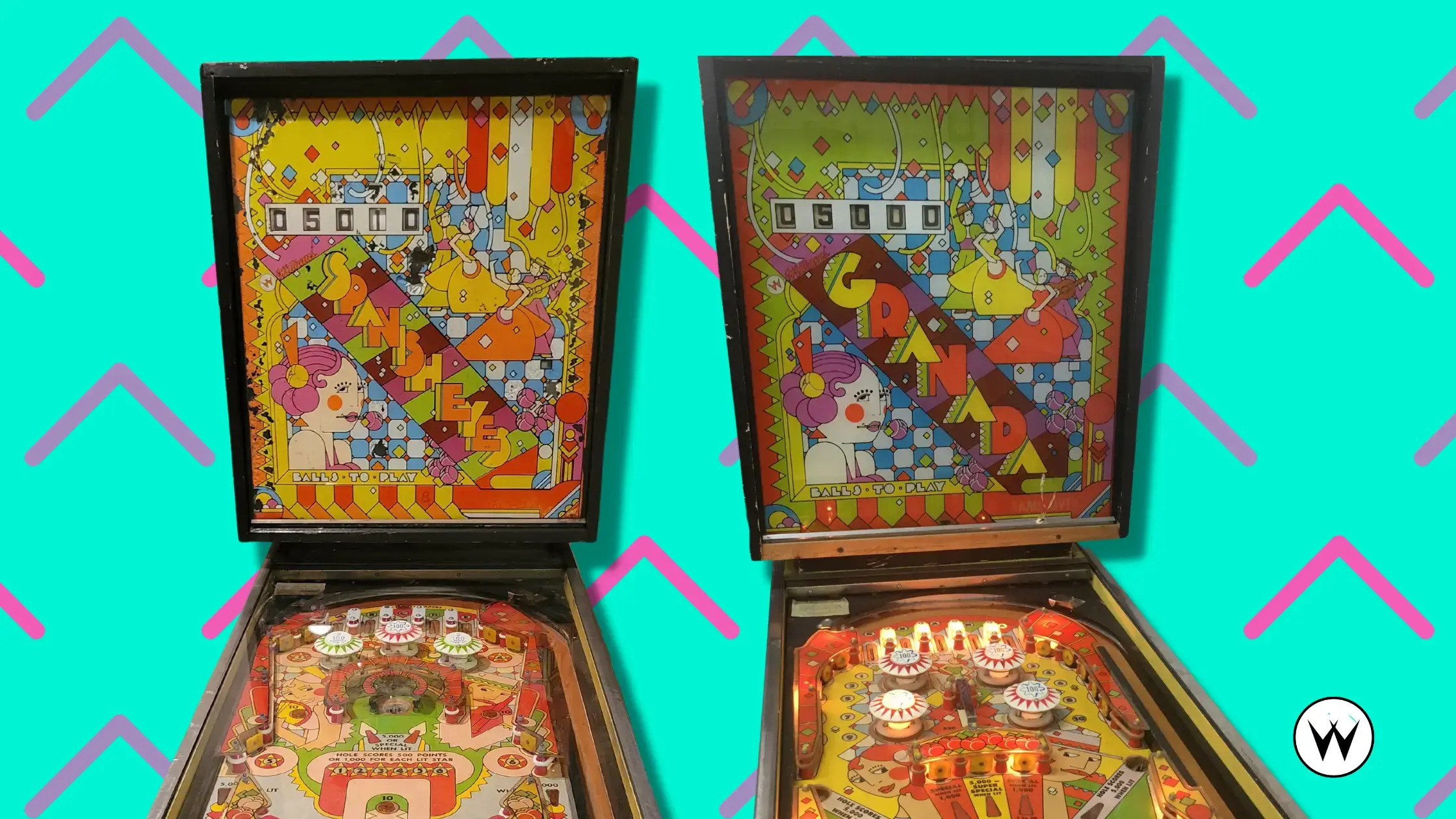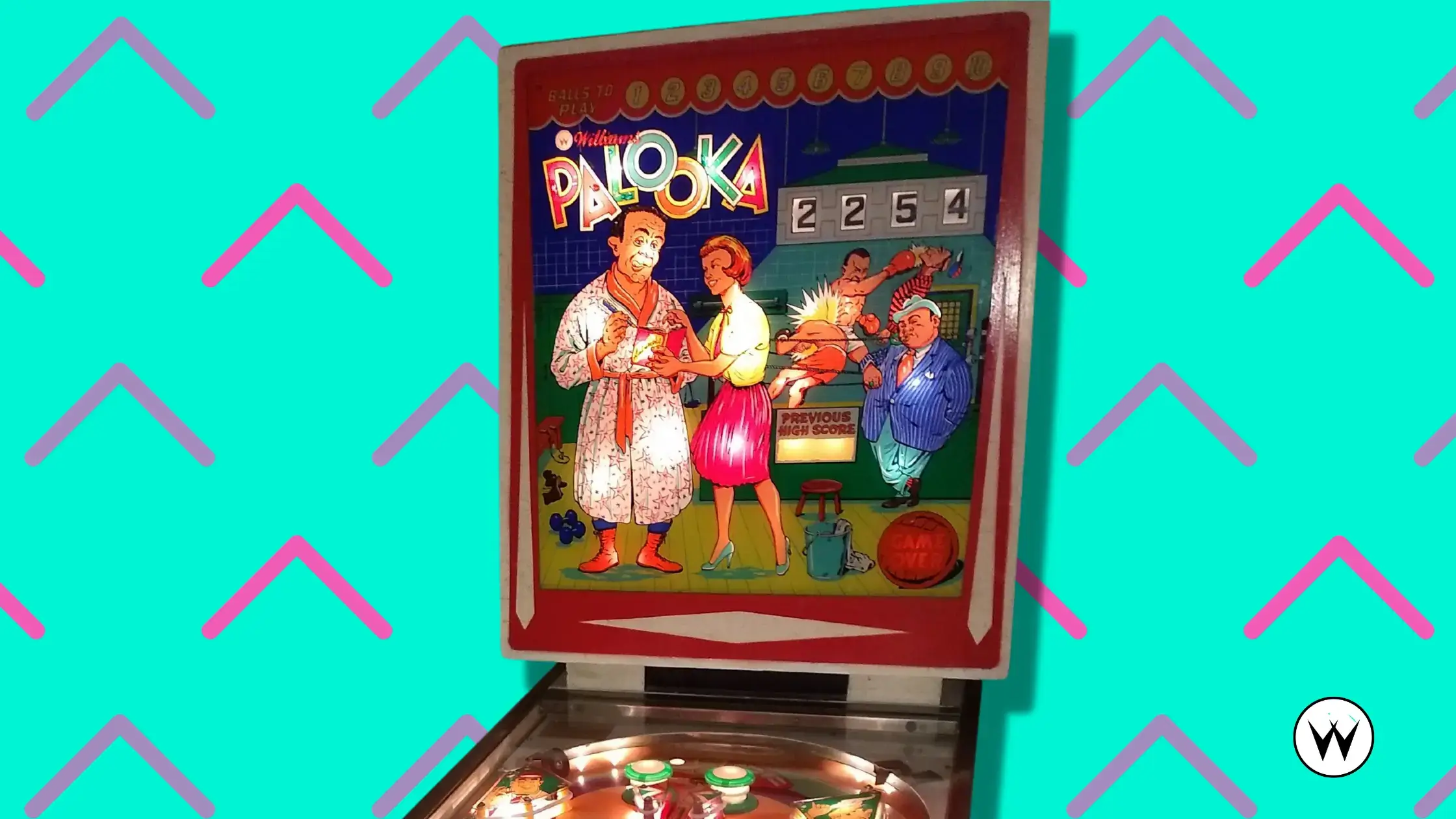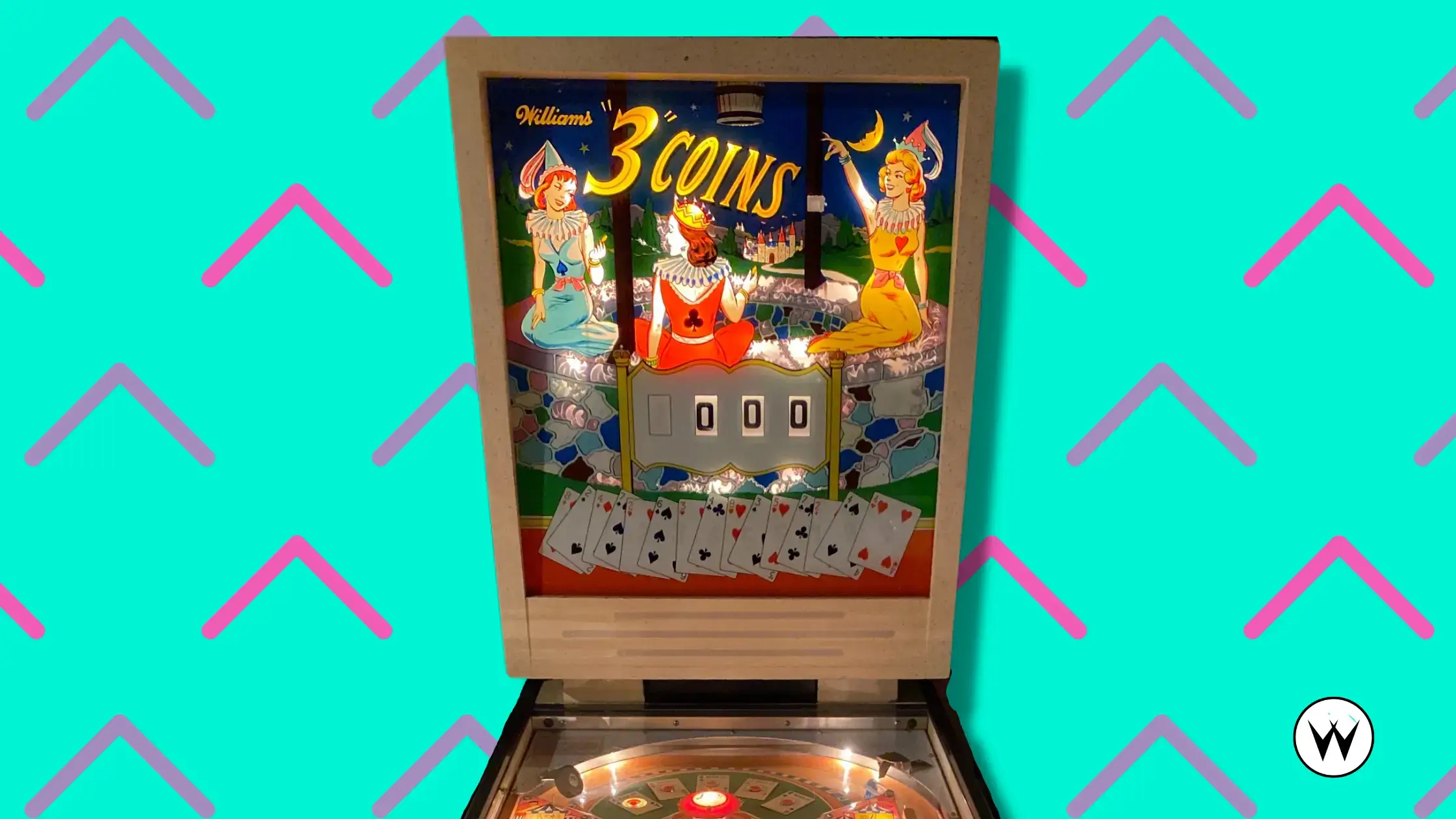Granada
Quickie Version:
Choice of UTAD or shatz-all-day.
Go-to Flipper:
Balanced
Risk Index:
Very High
Full Rules:
Visually like Spanish Eyes [especially the backglass], but with a noticeably different playfield. Like Spanish Eyes, meant to be played with extra balls ON. And not much fun to play if the bumpers are weak. There are two ways to earn EBs on the game: one via the G-R-A-N-A-D-A letter lanes, the other via the numbered 1-10 standup targets. Finish either and then hit the corresponding special target in the center to get your extra ball. If you’ve finished both, hit the center special for two extra balls. Bumper strength is important since most of the numbers and letters on the game cannot be shot directly from either flipper. Most must be bounced into by the bumpers. If the bumpers are strong, shots up top will get you a couple of the numbers and maybe an up-the-top-lane letter or two. If they’re weak … you’ll wish you weren’t playing the game. Like Spanish Eyes, you get a 5000 point feature lit when you complete things, in this case, the left saucer for the letters and the right saucer for the numbers. Otherwise, most of your points come from bumper action up top - - the bumpers themselves, each target or lane you score, and the 500-point gate between the lower pair of bumpers. The two return lanes score 5000 each, big on this game, so since the return lanes are shatzable, learn to do it. In fact, if the bumpers are so-so and the shatz shot exit from the return lanes is safe, consider a shatz-all-day strategy - - boring but effective. Historical Note: this is the game where I first took up shooting the ball up the opposite return lane, what is now commonly referred to as “shatzing.” I think Neil Shatz was about 5 years old at the time.
via Bob's Guide
Spanish Eyes
Quickie Version:
Center horseshoe all day if the return from it is safe; if not, up top until you have most of the numbers 1-6, then center saucer all day. If the center saucer kickout and horseshoe shot both feed the ball to the bottom bumper too often, UTAD.
Go-to Flipper:
Balanced
Risk Index:
Very High
Style Alert:
Go with the Flow!
Full Rules:
This game is lots of fun - - if the bumpers and flippers are strong. It’s also got a rare layout, with a center-bottom bumper between and below the flippers, making ball control more challenging than most games. It’s best played with extra balls on [note to TDs!] to make the top A-B-C-D-E lanes meaningful; players won’t earn so many as to make the game play unduly long, so go ahead and leave EBs on as the designers intended. Strategy is two-fold, one for points, one for EBs. For points, you want to shoot the center horseshoe [5000] and center saucer [1000 for each of the number 1-6 you’ve collected]. For the saucer, you need to do some up top work first to get your numbers lit. The real question is how are the feeds from shots around the horseshoe and kickouts from the saucer? With enough numbers collected, the two are similar in value, so it becomes a matter of which one you can best survive the return from. Of course, if you’re way more accurate at hitting one than the other, that enters the equation as well. The center saucer usually kicks out towards the right flipper, but not necessarily so that you can drop catch it. Dead bouncing isn’t likely to work since the ball rarely goes across to the other flipper, falling onto the bottom bumper instead. Can you get control after the kickout? As for the horseshoe shot, it’s likely to come out so that it lands on top of that bottom bumper. What happens next depends a lot on how strong that bumper is. If it’s weak, the ball will rattle around a bit and then weakly dribble-drain down the center. If it’s strong but the ball tends to come out of the horseshoe at an unfortunate angle, it may do a quick double- or triple-bank shot center drain. What you need is a strong bumper and for the horseshoe feed to hit close enough to the top of the bumper for the bump to kick the ball up where you can flip at it or cradle it. As for extra balls, getting the five A-E letters will immediately add a ball. The other way to earn one is to complete the numbers 1-6 and then shoot the center horseshoe. In each case, the numbers or letters will then reset. That means the number way to EB presents an interesting strategic quandary: when you have 1-6 lit, the center saucer is worth 6000. If you shoot the horseshoe, you get an extra ball, but now the saucer value drops back to 500 points until you hit the numbers again. Which is worth more, continuing to shoot 6000-point saucers or another ball? Finishing 1-6 also lights the outlanes for 5000; these stay lit even if you collect the extra ball but reset for the next ball in play. The Skill Shot is a two-part one: the first part is to roll over the “on bumpers” button above the center C lane to make the two side bumpers worth 100 points. Part two is the letter choice: plunge for the C on the first ball and then for whichever letters you still need thereafter. I go for the C first: the ball will then hit the 100 bumper directly below the C, which can bump it back up through the C. This may cause the ball to hit that “on bumpers” disk, in case I missed it on the plunge. I might also be able to nudge the ball into one of the other letters as it falls back. Overall, this means that your shot choice depends on lots of things for an EM: are EBs on? Up top becomes more important, especially if the upper bumpers are active enough to pop the ball up through the A-E letter lanes. Do you need numbers to light the saucer? Up top again. Does the horseshoe give you a good feed? Shoot it often. Is the saucer value high and provide a good ball return? Go for it. Then there’s the nudging skill for when the ball goes into that bottom bumper zone. As long as the ball is still bumping around, you may survive. You’ll find your nerves get edgy when the ball goes in there for more than a fraction of a second. You may also need to play “flipper defense”: balls bouncing off the top of the bottom bumper can be propelled past the flippers into either side outlane if you don’t take a swat at them as they go by. But I must warn you that you can lose a ball under either flipper. There’s no wall or rail there, just empty space hidden by the playfield plastics. Mis-time your flip and it’s under-and-out to your ball! Control vs. Flow Alert! This is another pro-flow game. When you can repeat the center saucer, control wins for that specific shot, but in general you want to be going UTAD until your saucer value is high. Don’t assume that a ball bumped up to either side by the bottom bumper will give you a chance to cradle it, either; as mentioned above, it may side drain. You have to gauge the strength of the bump.
via Bob's Guide












